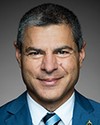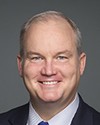I think there are a couple of things to note here.
First, this is an area we've been looking at very closely for the last several years in terms of how “administrative segregation”—the term that's used in the legislation—is used. People call it “solitary confinement” or use other terms. We use the term that's defined in the law for separating offenders from the general population.
That said, we've looked at our practices. We've examined the oversight processes in place. We're continuing finding ways to try to ensure that we live up to the spirit of the law and live up to the letter of the law as it relates to anybody who is placed in segregation.
In terms of some of the work we've done just in the last year, we were running on average, for decades, between 700 and 800 individuals in segregation on any given day across the country. That's out of an incarcerated population of about 15,000. We now are running between 410 and 440, and the length of stay for people in segregation is much reduced.
We've put in place a couple of things. We have more engagement with mental health professionals for individuals who are in segregation, and more direct oversight by the wardens of those institutions. The wardens are required now to go down there daily and to see every offender in every cell in segregation.
We also have a more significant national oversight body that looks at finding alternatives. If an individual cannot be released back into the general population in the institution they're currently residing in, can they be moved to a general population in another institution in one of our regions, or can they be moved to another general population across the country?






